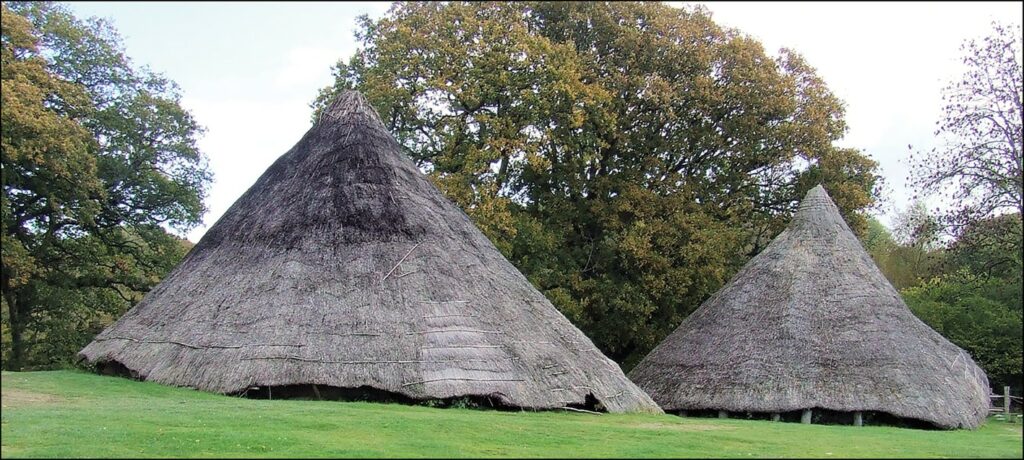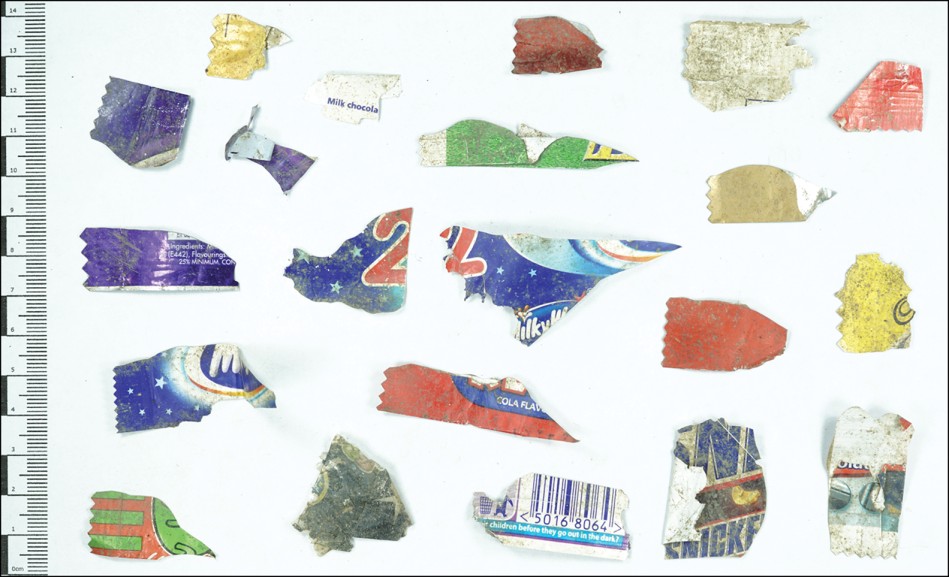There’s plastic everywhere. We’re living in a plastic age, and we see this every day around us: on the ground, in the seas, even in the air we breathe — and that’s not even it. Now, researchers have even found plastic (including a Godzilla thermos wrapper) inside an archaeological site.

Located in Wales, Castell Henllys Iron Age Village is an archeological site and a tourist attraction. It’s essentially an Iron Age fort with reconstructed roundhouses that visitors can walk through while learning about history. The roadhouses were reconstructed on the same spot where the original structures stood around 2,000 years ago.
Two of those reconstructed roundhouses ended their heritage life in 2017 and 2018 after 35 and 30 years of use respectively. They were demolished and the Pembrokeshire Coast National Park, which runs the site, arranged for them to be excavated, acknowledging their value from an archeological perspective.
The first house, known as the Cookhouse, was 9.5 meters in diameter and was first erected in 1982. It was predominantly used to show what a domestic Iron Age house would’ve looked like. Meanwhile, the second one, known as Earthwatch, was erected in 1984 and had curved benches inside it where visitors could sit.
Taking a close look at the site where the houses stood represented a valuable opportunity for archeologists. They could study decay processes, determine which human activities result in leftover waste, and understand how replicated structures might affect the integrity of prehistoric structures located at the same site.
While there has been a lot of research into how plastic ends up in the ocean, there has been much less into its presence on the land. Studies were done in areas where plastic is expected to collect such as urban areas, but looking at this specific site was the opportunity of looking at what was described as a “benign” environment.
UK researchers Harold Mytum and James Meek found more than 2,300 individual pieces of plastic such as candy wrappers, straws, and a Motorola phone battery in the ground when excavating the reconstruction sites. This is a very rural setting in the countryside, so the large amount was very surprising for the researchers.
“We thought we would find items that were lost during the use of the houses, but the amounts were disturbing in their environmental implications,” Mytum told CNN. “To find that here gives the site a new importance — it shows how our plastic discards affect everywhere.”
The plastic was thought to come from visitors, with most of it being found in the Earthwatch roundhouse. Researchers believe this was because it was less well-lit and visitors spent longer in this space. In bad weather, this is where they would eat their packed lunches, which explains the finding of plastic cutlery and food wrappers.
A complete Golden Wonder noodles foil lid, 21 plasticized apple stickers, plastic clothing items, and one pair of glasses were some of the plastic products found on the site. Other surprising findings were a Godzilla-themed thermos wrapper, bottle caps, plastic straws, and the plastic wrapping that affixes straws to drink cartons.

Candy wrappers made up the biggest single category, with around 1,100 fragments found between both roundhouses. Most of the items were small and fragmentary in nature, such as torn packages, which explains why not all of the garbage was collected. There were no obvious signs of the plastic having decayed at all.
Other items found are related to heritage interpretations given at the site. Back when the houses were houses, guides represented local tribes that once inhabited this part of Wales. Visitors did role-playing activities, which included cooking and face painting. Several plastic face paint containers were uncovered.
Looking ahead, the researchers hope to continue working with Pembrokeshire Coast National Park to educate the public on these matters and to find more effective ways of keeping these important spaces clean. But this won’t be easy, calling for all of us to rethink our lifestyle needs to tackle plastic waste.
“Even rural, well-managed locations can have a significant build-up of plastics in the soil,” Mytum told Gizmodo. “The Plastic Age has indeed come not only to the oceans of the Blue Planet, but also to its soils. Reducing use of plastics is essential—this debris was a by-product of our lifestyles even in a place where any obviously modern materials, such as plastic litter, is cleared away to avoid affecting the heritage visitor experience.”
The research was published in the journal Antiquity.



